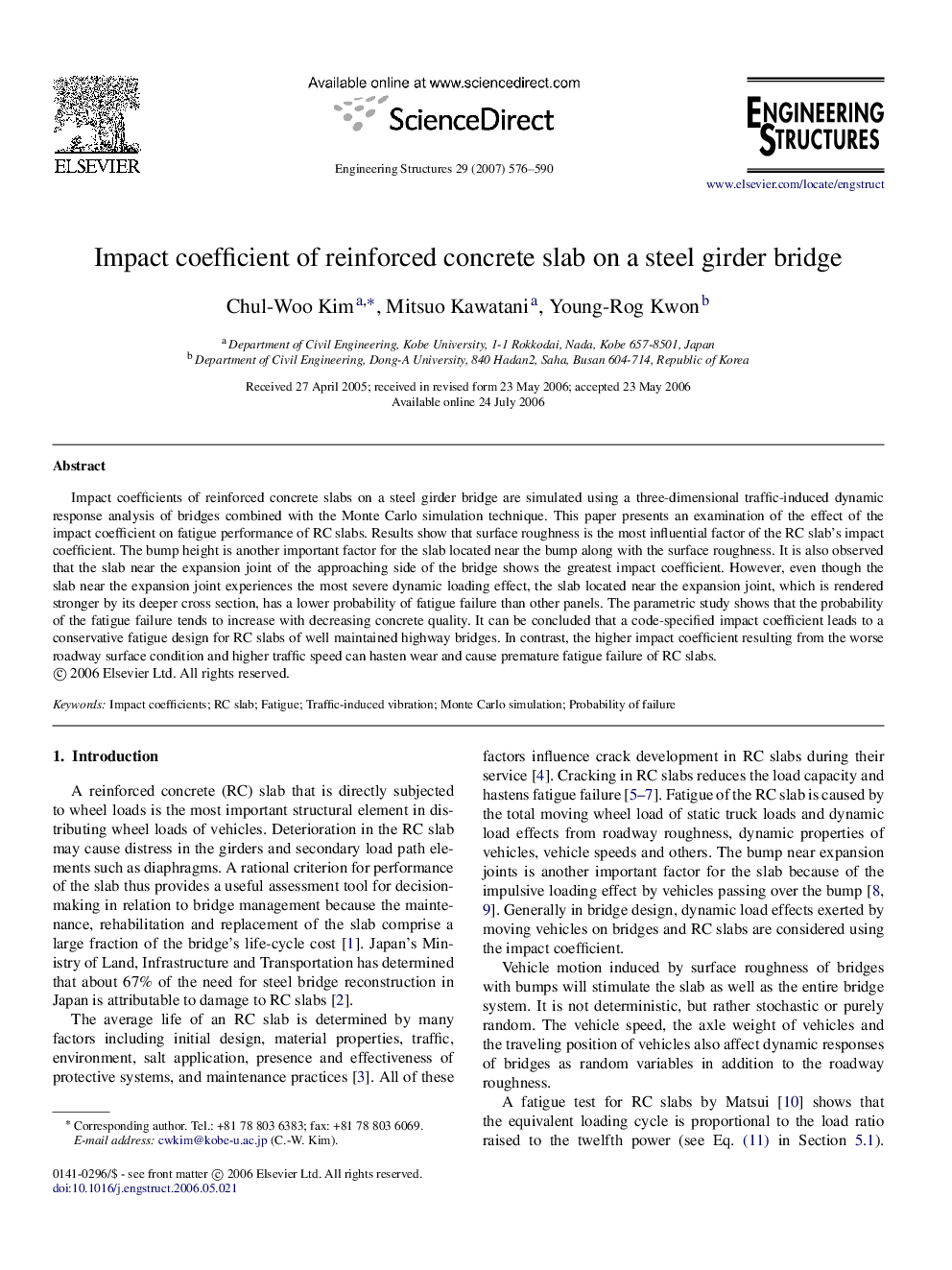| Article ID | Journal | Published Year | Pages | File Type |
|---|---|---|---|---|
| 269348 | Engineering Structures | 2007 | 15 Pages |
Impact coefficients of reinforced concrete slabs on a steel girder bridge are simulated using a three-dimensional traffic-induced dynamic response analysis of bridges combined with the Monte Carlo simulation technique. This paper presents an examination of the effect of the impact coefficient on fatigue performance of RC slabs. Results show that surface roughness is the most influential factor of the RC slab’s impact coefficient. The bump height is another important factor for the slab located near the bump along with the surface roughness. It is also observed that the slab near the expansion joint of the approaching side of the bridge shows the greatest impact coefficient. However, even though the slab near the expansion joint experiences the most severe dynamic loading effect, the slab located near the expansion joint, which is rendered stronger by its deeper cross section, has a lower probability of fatigue failure than other panels. The parametric study shows that the probability of the fatigue failure tends to increase with decreasing concrete quality. It can be concluded that a code-specified impact coefficient leads to a conservative fatigue design for RC slabs of well maintained highway bridges. In contrast, the higher impact coefficient resulting from the worse roadway surface condition and higher traffic speed can hasten wear and cause premature fatigue failure of RC slabs.
